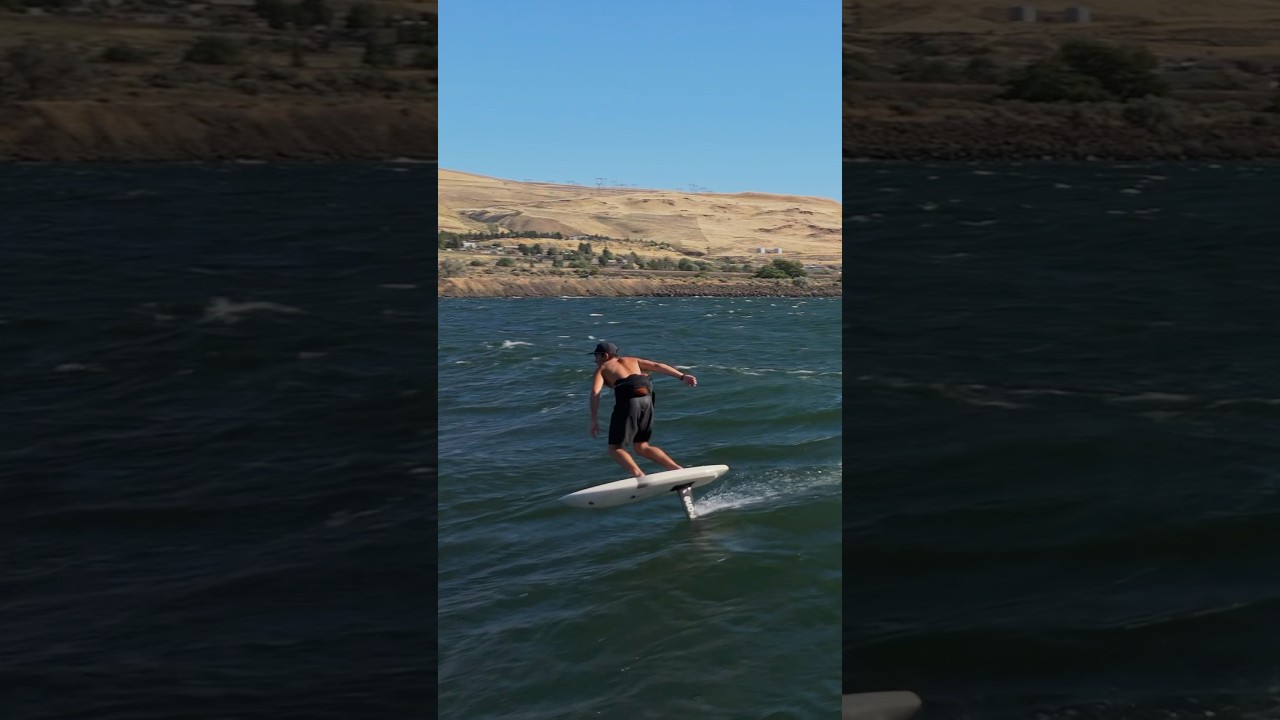I put together some rules for a casual competition a while ago, but I’m way too timid a person to actually organize it. The idea was for a short course roughly 200m between markers. Casual evening racing once a week - no defined start time. Just show up and find the person with the clock & clipboard. If anyone wants to set something up in their area, please go ahead and use these - tell me how it goes:
General Rules:
Basic courtesy rules & priorities still apply, we are sharing the river. Don’t ruin it for other people, especially for those not participating. When sailing on opposite tack, the starboard rider has right of way. When sailing on the same tack, the leeward rider has right of way. Riders sailing powered should give way to unpowered riders on swell. Don’t expect that everyone will know these rules, ALWAYS do everything you can to avoid a collision, even if you technically have the right of way. Make eye contact, and try to make your intentions clear.
You can start an attempt at any time within the event window (2 hours), make sure you’re registered with the timekeeper before you go out onto the water.
You have 2 attempts per event, they can happen at any-time during the event window, so make sure you forecast conditions and choose wisely (do you hedge your bets and spread out your attempts, or do you trust that the conditions will improve / decline and throw your eggs into one basket?). Your final time is the average of your attempts.
To keep the peace with other river users, to make sure we can accurately track participants, and to encourage cheerleading, we will limit the amount of people on the course at any one time.
The timekeeper will try to keep an eye on participants, but this is honor-based rule enforcement. Don’t be a doorknob and intentionally break the rules - you’re just kicking puppies at that point.
The course is intentionally kept short to make it casual, to allow for spectating, and to give equal weight to a variety of skills - pumping, bump riding, upwind angles, jibes/tacks, packing & redeploying.
The Course
There are two markers, which are white fishing net buoys upwind and downwind of the Point - partially in the eddy closer to shore. Keep note of these two buoys because they will be important for the following explanation (obviously we will not run the event if there are nets out).
The start is a “running start” and is the only time on the course that you may have the parawing deployed in between the two buoys while travelling downwind. Racers will warm-up in the area upwind of the downwind buoy, then give a thumbsup to the timekeeper that they are about to start. Make sure the timekeeper sees you and gives you a thumbs up that they are ready to write down your start time. Racers then sail downwind past the buoy (passing in between the buoy and the shoreline). The time starts once the racer passes downwind of the downwind buoy, and they can begin the upwind leg.
There is no course boundary on the upwind leg, you can go as far out into the river as you would like. It just depends on wind conditions, swell conditions, your expertise in manoeuvers, etc. Strategize accordingly. (Tip: Make sure you know beforehand where all the weed is!).
You must sail upwind PAST the upwind buoy. Give yourself enough room upwind, because you must have your parawing stowed by the time you pass downwind of the buoy.
(Tip: This buffer zone will be different for everyone - depending on your skill in stowage, the conditions on the day, how well you can multitask (you might have to pump around the buoy if conditions aren’t huge!)). (Extra tip: you may have to stow your parawing further out in the river where there are better bumps to stow your parawing neatly, then surf/pump your way over to the buoy to round it).
In-between the two buoys riding downwind, you must have the parawing stowed. This means “hands-off” and not being used for propulsion. Stuff it under your shirt, put it in a belt pouch, down your pants, etc. We are intentionally keeping the definition vague to allow for some creative ways of stowing. We may change the definition depending on how “creative” people get…
On your downwind leg, there will be a mix of pumping and swell riding depending on conditions and your foil choice. You can choose to hug the shore (more pumping, potential weed issues?), or you can go further out into the river for some swell (less pumping, save energy for multiple laps!).
If you fall during the downwind leg, you have two choices (pick wisely, depending on where you are). You can redeploy your parawing, BUT if you do you must go back around the upwind buoy and re-stow as a penalty. OR you can prone paddle to the downwind buoy with no penalty and redeploy as usual.
Once past the downwind buoy you can redeploy your parawing and begin your upwind leg again.
1 Upwind leg & 1 downwind leg constitute 1 lap. Your time stops when you’ve completed the required number of laps (which means an attempt will finish with a downwind lap - parawing stowed).
